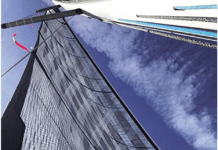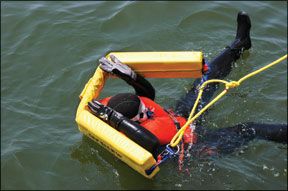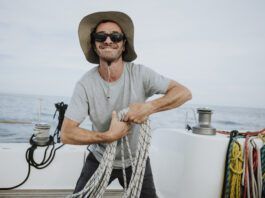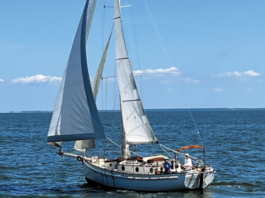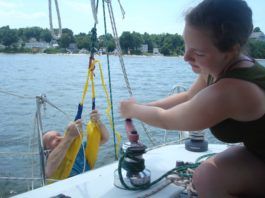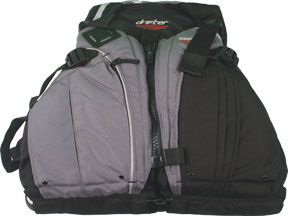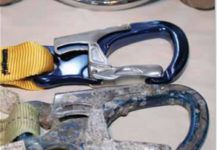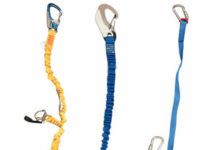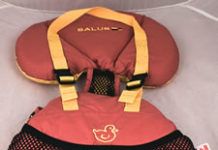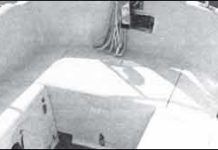Safety Lessons Learned Part 1
This is the first in a two-part series that examines extensive reports on three sailing accidents. Each capsule summary of the reports is followed by a brief analysis of the US Sailing reports, and our recommendations for sailors. Fourteen-year-old Olivia Constants died last summer when her harness was accidentally hooked in the trapeze and she could not surface after the boat turned turtle. US Sailing made recommendations regarding capsize and recovery training; life jackets; trapeze gear and training; entrapment; electronic communication; language; and crisis, incident, and disaster plans.
Help Us Design a Better PFD/harness
Do try this at home: Don your favorite inflatable-PFD/harness and inflate it. Dont waste a gas cartridge; use the oral inflation tube. Wade into the water. A pool is fine-make sure it is still shallow enough to stand. Now, imagine you are underneath an overturned hull and are trying to escape. Try to swim beneath the surface as you might do to get out from under the turtled boat. You don't have to dive deep, the imaginary overturned boat could be as small as a dinghy.
PS’s Safety Tether Test Results Reignite Concerns
The safety tether is the sailor’s leash—a short stretch of webbing or rope that keeps a sailor from going overboard. Its purpose is complicated by the fact that it must be capable of two opposing functions: It must offer a secure means of attachment to the boat, and, when the need arises, provide a quick means of release. The recent Chicago-Mackinac Race tragedy and similar accidents, recent product recalls, and findings in Practical Sailor’s latest round of tether testing also bolster the argument that sailors—and manufacturers—need to pay more attention to the safety tethers on the market today. For this test, we evaluated three different West Marine tethers and found that despite improved engineering, they still fall short of perfection.
Sailing Fatality Studies Shine Light on Tethers
The capsize of WingNuts is not the first fatal accident that has put the spotlight on the harness-to-tether connection. Since 1986, several widely publicized fatal sailing accidents have prompted inquiries into the harnesses and safety tethers used by sailors.
The Sailor’s Leash: Single or Double? With Elastic or Without?
Once you’ve settled on the types of clips you want on your tether, the next choice is the webbing construction. Currently, there are two main types of tethers: single tethers with one hook at each end; or double tethers, with two legs and three hooks. Double tethers have an extra clip, usually attached to a short leg at the mid-point of the tether, that shortens the length to about 3 feet.
The Sailors Leash: Single or Double? With Elastic or Without?
Once you’ve settled on the types of clips you want on your tether, the next choice is the webbing construction. Currently, there are two main types of tethers: single tethers with one hook at each end; or double tethers, with two legs and three hooks. Double tethers have an extra clip, usually attached to a short leg at the mid-point of the tether, that shortens the length to about 3 feet.
A Second Look at Safety Tethers
Sailing harnesses and safety tethers were put to the ultimate test in July when a storm packing winds of more than 50 knots swept through the fleet of sailboats racing in the annual Chicago-to-Mackinac Race. One of the boats, the Kiwi 35 WingNuts, capsized in a powerful gust. It stayed inverted, forcing the crew of eight into the water. At the time of capsize, the crew were wearing safety harnesses and tethers, and most were clipped in to jacklines on the boat. All but two of the sailors, skipper Mark Morley and his girlfriend, Suzanne Bickel, were able to unclip themselves and survived.
Youth Safety Gear Top Picks
It’s summertime, which means the kids are out of school and flocking to youth sailing camps, heading out on family cruises, and cooling off in the pool. Over the years, we reviewed dozens of safety products to keep wee crew safe around the water, including PFDs (personal flotation devices) for children, toddlers, and infants. Here are some of our top picks.
Re-examining Youth Sailing Safety
Fourteen-year-old Olivia Constants was participating in the Severn Sailing Associations junior race training program on Chesapeake Bay in late June when she and her partners Club 420 capsized sharply to leeward and inverted. While her partner emerged from the inverted hull, Constants did not. By the time the support boat reached her and staff pulled her out of the water, she was unconscious. Attempts to revive her failed.
Life Raft Stowage: The Overlooked Necessity
Sometimes, it seems that safety is a dirty word in the boat- building industry. A favorite marketing catchword is "bluewater cruiser." We assume this means a boat capable of going to sea, rather than a boat designed to tiptoe along the shore. But when you go aboard the "bluewater cruiser", more often than not you find a boat most suited for blue water when it is secured to the deck of a ship enroute to the dealer. Nowhere is this more apparent than in the provisions made for the stowage of life rafts. Or rather, the lack of provision made. Few people would venture offshore without a life raft, yet the location of the raft aboard the boat is almost always an afterthought.













